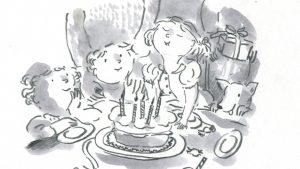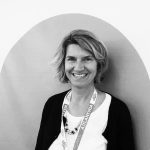This course provides some solid bases in order to be able to realize some effective illustrations, able to excite and involve the viewer. We use to think that drawing spontaneously is a process that is blocked by mysterious negative forces, but more often than not, the only block that prevents us from drawing freely is that we aren’t able to dominate with confidence the blank page, and we don’t know exactly what we want to communicate. Starting from listening of our emotions while we are drawing, we will get to develop some illustrations in a fully new way. Illustration holds some specific aspects that differentiate itself from the other visual languages: more than with painting, it has a relationships with cinema and theatre. Illustrtion is often light as a feather, unfinished, subtle as a frame. It’s a passing of time.
We will understand together how to make an image “light” and in movement, and how to convey the feeling that it was born effortlessly out of our hands. We will work with fast techniques, where it’s possible to male a mistake and correct the sketch without having to start all over again, in order to practice in total freedom on the construction of the scene, on the effects of field depth and on the tones of different expressions of the characters; we will discover again the pleasure to create. The beauty of an illustration is not an aesthetical fact, but rather an empathic one.
At the end of the course the trainee will go back home with a baggage of knowledge that will make him or her feel more self-assured in the realization of an illustration: for a contest, for a portfolio or a project book to be presented to a publisher, or maybe only to draw freely and with pleasure for oneself, dominating consciously the composition and the blank page.
Program
Study of two different pictorial techniques: crayon and Liquin; indelible china and collage.
Faces and bodies: anatomy and stylistic synthesis.
Perspective and overlapping plans: the depth of field.
Composition and balance of the page.
The course is open to whomever desires to get a deeper grasp of the languages of sketch and illustration. It is a basic course, but not only for beginners. It so often happens that we keep drawing for months and years, only to end up with the feeling that we need to start it all from scratch again, to rebuild the foundations. The course is also open also to young kids that are able to stand eight hours of sketching a day. Every student will be followed individually, starting from a beginner’s level.





